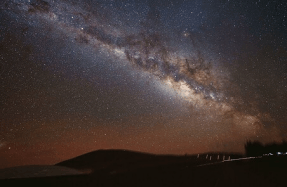STRANGEST STAR IN THE UNIVERSE

What happens inside a black hole? That is a question that has long plagued astronomers, with numerous theories put forward, and numerous problems. Black holes have a gravitational pull so strong that nothing, not even light, can escape. This leads to a problem known as the ‘information paradox’ where information could disappear forever inside a black hole, something that doesn’t hold up against our laws of physics. But an emerging theory put forward a few years ago proposes an unusual solution to this problem: that black holes are not what we think, and instead contain an object known as a ‘Planck star’ – collapsing stars rebounding in slow motion that, over time, emerge from view.
The idea of Planck stars was proposed in a paper by Carlo Rovelli from the University of Marseille in France and Francesca Vidotto, then of Radboud University Nijmegen in the Netherlands, in 2014. The two astronomers suggested that at the core of the black hole there could exist a tiny object – a Planck star – that stores all information about infalling material into the black hole. As the black hole evaporates and its gravitational boundary – known as the event horizon – shrinks,
You’re reading a preview, subscribe to read more.
Start your free 30 days





